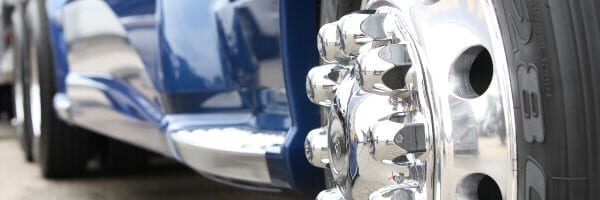In June of 2017, brake system violations and adjustment issues together accounted for over 41 percent of vehicle out-of-service violations during the International Roadcheck. Most of these violations could have been avoided through regular maintenance and upkeep. Here are 10 tips from Bendix to make sure your breaks are in tip top shape to keep you on the road.
- Pre-Trip Readiness: Walk around the vehicle daily to visually inspect brake components and listen for audible air system leaks. Examine wheel-ends to make sure that the air chambers, pushrods, and slack adjusters are not damaged or hanging loose. Once or twice a week, get under the vehicle to check air disc brake rotors for cracks and inspect the lining wear on drum brakes without dust shields. Know how to read antilock braking system (ABS) warning light fault codes using the dashboard diagnostic switch or a remote diagnostic unit, and how to address them.
- Monthly Air System Checks: An air system contaminated by moisture – particularly oil – can suffer deterioration of components such as air seals, brake modulating valves, and brake chamber diaphragms, which can lead to air system leaks. Check for moisture in the system, and use oil-coalescing air dryer cartridges.
- Attention to Chambers: During pre-trip air system tests and visual inspections, listen for air leaks around the chamber; check for missing parts such as dust plugs, caging bolts, and clamp bands; and look for obvious damage to the chamber, such as dents, corrosion, and bent pushrods.
- Air Disc Brake Upkeep: Check the mounting hardware of calipers and air chambers; monitor pad wear (minimum allowable friction material thickness is 2 mm); measure rotor thickness and look for cracks that exceed allowable limits; and look for damage or corrosion on tappets and boots. Ensure proper running clearances between the rotor and pads, and check that the caliper slides freely.
- Learn from Your Friction: Check friction regularly for cracks or missing pieces, ensure adequate thickness, and examine drums and rotors for signs of dragging brakes or overheating linings. Know the signs of drum friction improperly rated for the vehicle, including scoring on the friction or the drum; degradation that gives the friction a porous, charcoal-like appearance; and “hot spotting” – a leopard-spotted pattern on the drum.
- Determine Brake Free Play: Free play – the distance that the center of the large clevis pin moves before the brake shoes come in contact with the drum – should be between 3/8 and 5/8 of an inch. If free play falls below the minimum or exceeds the maximum, inspect all brake components for damage or out-of-spec conditions. Free play should be the same across all brakes on a system.
- Measure Wheel-End Brake Stroke: Check the distance from the chamber to the large clevis pin with the brakes released, and again after a fully charged brake application. The maximum allowable power stroke varies depending on the chamber size and type.
- Keep Slack Adjusters Lubricated: Inject new grease until old grease is forced through the release opening. Manufacturer instructions will advise on how much grease to purge from the adjuster, and what lubricant to use. Grease every 30,000 miles, or every time you do a preventive maintenance inspection.
- Grease to Capacity: Insufficient grease to fill all interior gaps can lead to condensation forming inside the brake components, which may cause rust and corrosion. Seals inside the cam tube are engineered to let excess grease out of the area, so new grease should be added until any dirty grease or condensation is visibly purged out of the end cam tube near the slack adjuster.
- Select the Right Friction: When relining brakes on vehicles affected by federal stopping distance regulations, ask suppliers for evidence of compliance: Not all replacement friction marketed as acceptable will actually perform to the standard. To maintain OEM performance, replace with like-for-like friction.
Whether you’re just starting out or currently manage a nationwide fleet, Triumph Insurance Group has the expertise to protect your business through customized insurance plans. Call us at (800) 411-7542.
